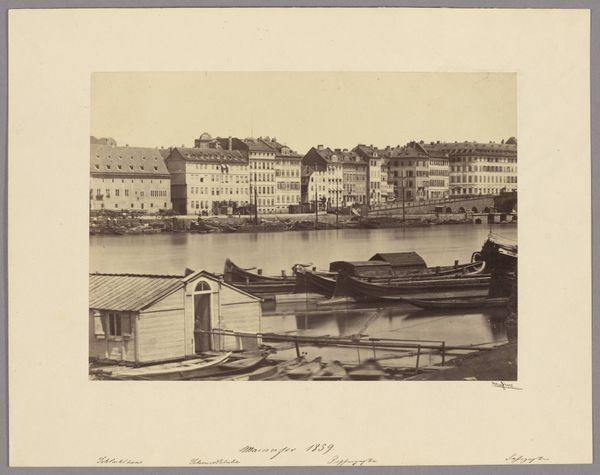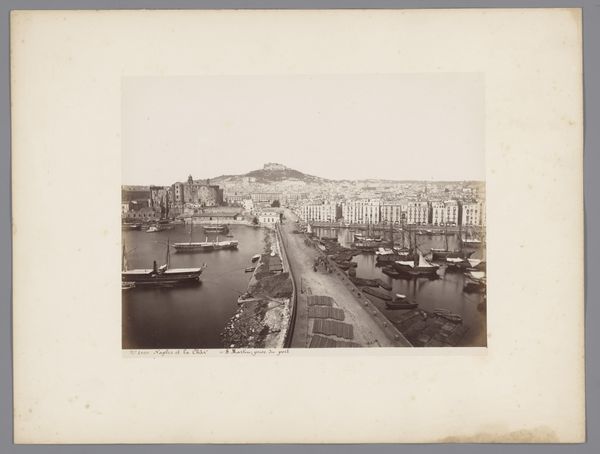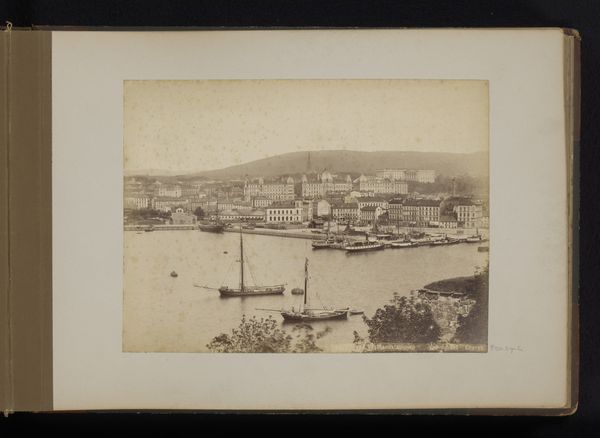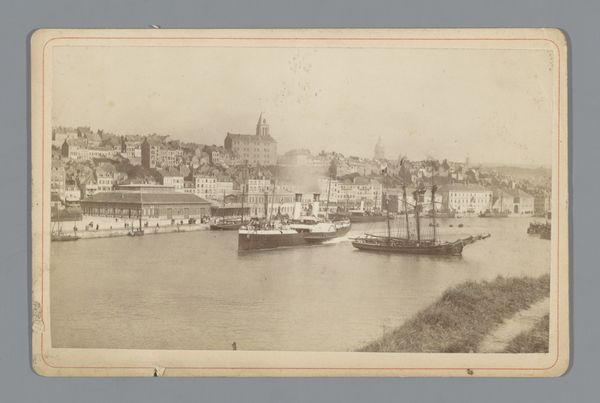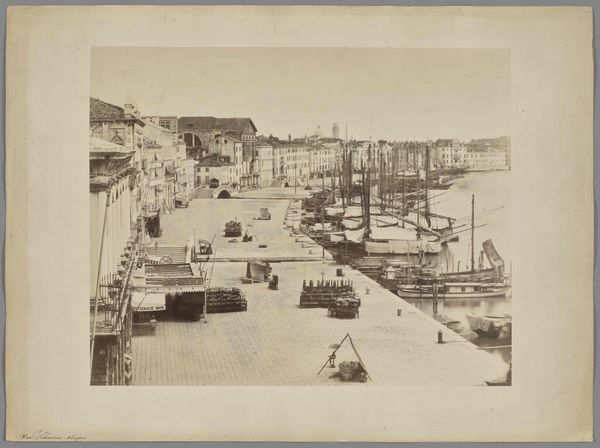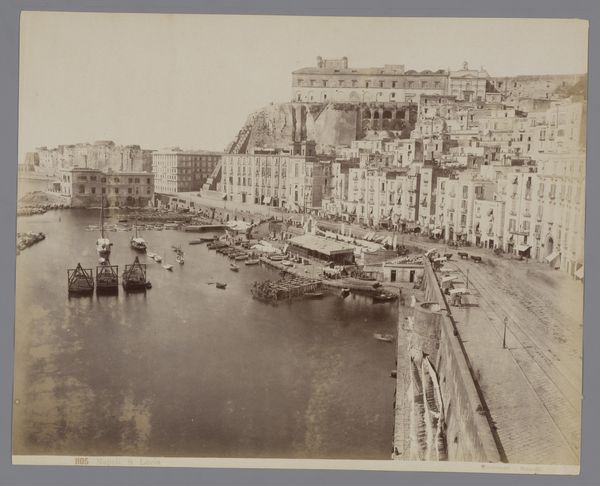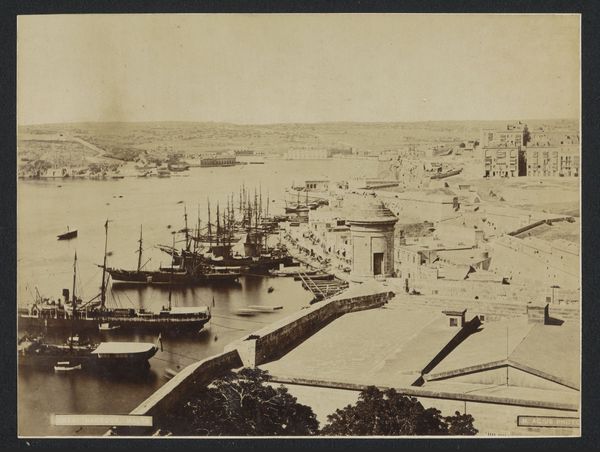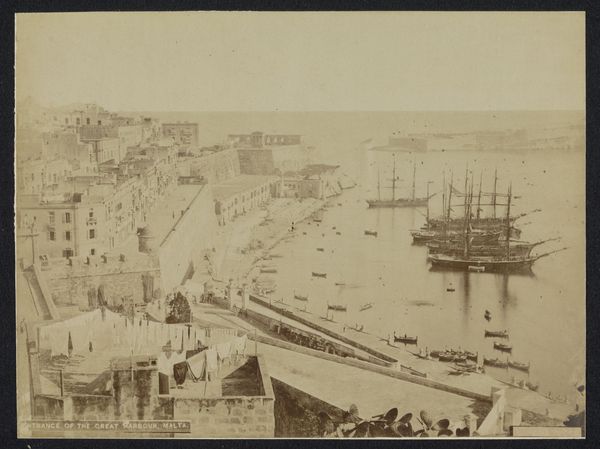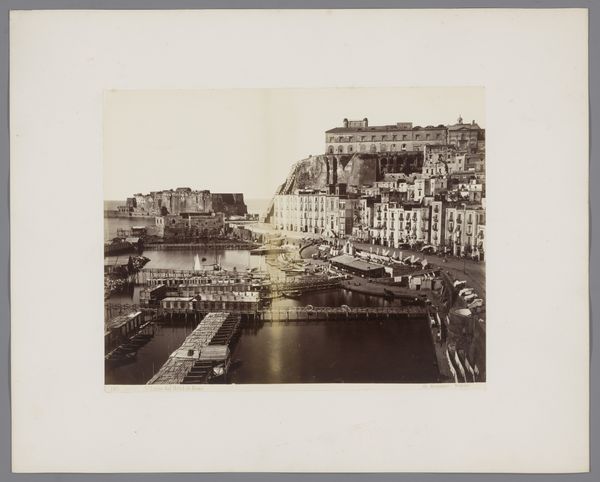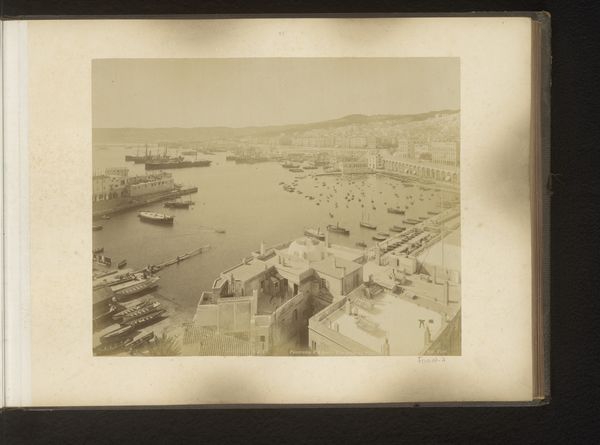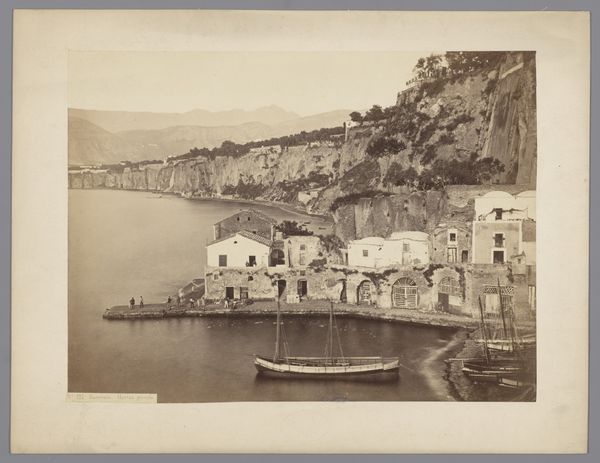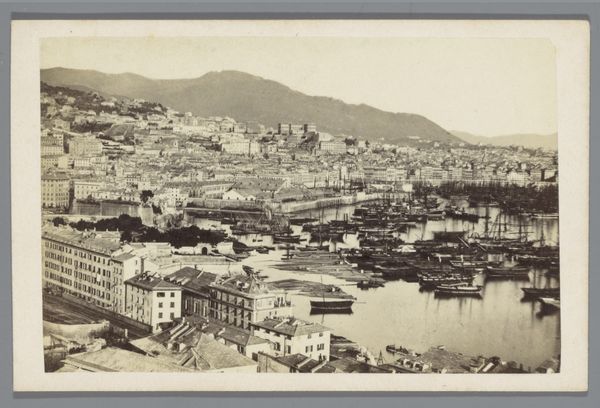
Dimensions: height 270 mm, width 355 mm
Copyright: Rijks Museum: Open Domain
Curator: We are looking at a photographic work by Giorgio Sommer, known as "Gezicht op de haven van Malta," or "View of the Port of Malta." Dating somewhere between 1857 and 1914, this albumen print captures a panoramic cityscape. Editor: It’s breathtaking. The clarity and depth of field create a palpable sense of stillness, and that silvery tonality evokes a certain…nostalgia, almost. It really feels like a memory frozen in time. Curator: Indeed. Sommer's use of the albumen process, prevalent in the mid-19th century, contributes to that characteristic tonal range. Consider the composition. The robust architecture of the city and port sprawls across the top half of the frame. Notice how the horizon line divides the image, creating balance between the buildings and sky. Editor: Yes, there's definitely a tension between human construction and natural space. What intrigues me, though, is how this image served perhaps less as an artistic statement and more as documentation. Malta was a critical port for the British Empire; this image participates in that larger project of visual cataloging and control. How do you see this relating to Romanticism? Curator: Certainly. Romanticism here doesn't only dwell in sentimental or idealized depictions, but in capturing a particular vista as sublime, grand, and reflective of a certain imperial presence. It emphasizes an appreciation of history as represented by the fortifications and bustling harbor. Editor: You're right, there is definitely an echo of that visual trope that artists throughout this period used in an attempt to portray these cities. It's intriguing how the print serves as a physical artifact that connects viewers across time and place to that complex imperial narrative. This reminds me that photographs were sold to tourists who wished to take an image of Malta back home with them. Curator: I agree, analyzing this photograph forces us to question the artistic choices that were available and in what way those choices reflected the beliefs of that period. I would call it a remarkable confluence of technique, vision, and cultural context. Editor: Absolutely. By unpacking its formal qualities alongside its historical placement, we start to reveal how the cultural value and narrative of a photograph can transform over time. It challenges us to think more critically about art, not as an object, but also as an instrument that holds cultural value.
Comments
No comments
Be the first to comment and join the conversation on the ultimate creative platform.

